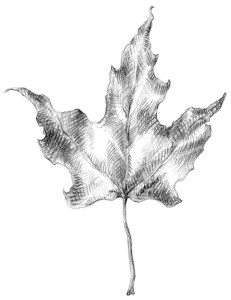Through The Garden Gate—November 2015
November is Elemental
By Leslie Watkins
Earth, wind, fire and water—without any one of these elements, there is no life and no garden. While each plays its part in supporting life on earth, soil is most closely associated with gardening. The living soil, so easily taken for granted, is a seething eight-inches of bacteria, fungus, mold and other microorganisms; a voracious energy microcosm that turns death into life, creates nutritious vegetables and fruit from manure and supports all life on earth. And yet it’s a fragile system easily knocked out of whack.
The rate of soil loss world-wide is a critical concern. Erosion is second only to population growth as the biggest environmental problem the world faces. We can be good stewards of the earth by protecting the soil in our own backyards and literally reap the benefits at the same time.
Soil is not just useful for plant growth. There is bacteria living there that when disturbed is inhaled and imparts a chemistry that lifts the spirits of the folks that dig into it. A strain of bacterium in soil, Mycobacterium vaccae, has been found to trigger the release of serotonin, which in turn elevates mood and decreases anxiety. Maybe this is the reason why gardening is addictive and why gardening therapy is so successful. Probiotics and prebiotics, the microscopic critters essential for the good health of all living creatures, come from the earth. Dirty hands and not so carefully washed and peeled root vegetables can transfer health benefits.
Good soil is made up of decomposed rock that provides mineral content and decomposed plants and animals that add the organic component and living microorganisms like bacteria fungi and mold. Compost in the soil feeds the microorganisms, and the microorganisms feed the plants that feed us. Adding organic matter (compost) to clay soils creates spaces where oxygen exchange can take place. Compost improves the tilth or texture of the soil allowing air and water to get to plant roots.
We can prevent the soil from becoming compacted by not working in the garden when the soil is wet. Raised beds with designated paths help protect the soil structure from collapse. Watering deeply not only encourages deep root penetration, it is necessary for bacteria and fungi. A layer of mulch on the surface helps keep the soil moist and cool, and protects the microorganisms.
Autumn is a great time to start a compost pile. Start with a layer of sticks and twigs to allow air in. Add layers of fallen leaves, stalks from the perennial garden cleanup and the frost killed plants from the vegetable garden. Add kitchen scraps like coffee grounds, egg shells, vegetable and fruit peels, and more dried leaves. Your goal is to give the microorganisms in the soil lots of things to eat. Feed the soil, and the soil will feed you.
November Chore Checklist
- Take soil samples for testing.
- Keep watering new plantings if dry.
- Clean up fallen fruit.
- Store winter squash.
- Mulch perennials to prevent frost heave.
- Finish planting bulbs.
- Bring in ceramic and terra cotta pots.
- Put mouse guards on beehives.
- Protect beehives from wind.
- Collect kindling for fireplace.

